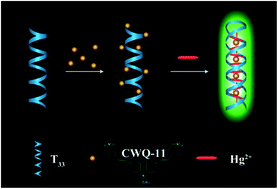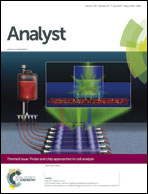A fluorescent probe with restricted intramolecular rotation-induced emission for label-free detection of mercury ions†
Abstract
Formation of T–Hg2+–T complexes changes the configuration of a single-stranded DNA, leading to enhanced fluorescence of an anchored cyanine-based probe that displays restricted intramolecular rotation (RIR)-induced emission. This label-free system can be used as a sensor for mercury ions with a detection limit of 4 nM.


 Please wait while we load your content...
Please wait while we load your content...